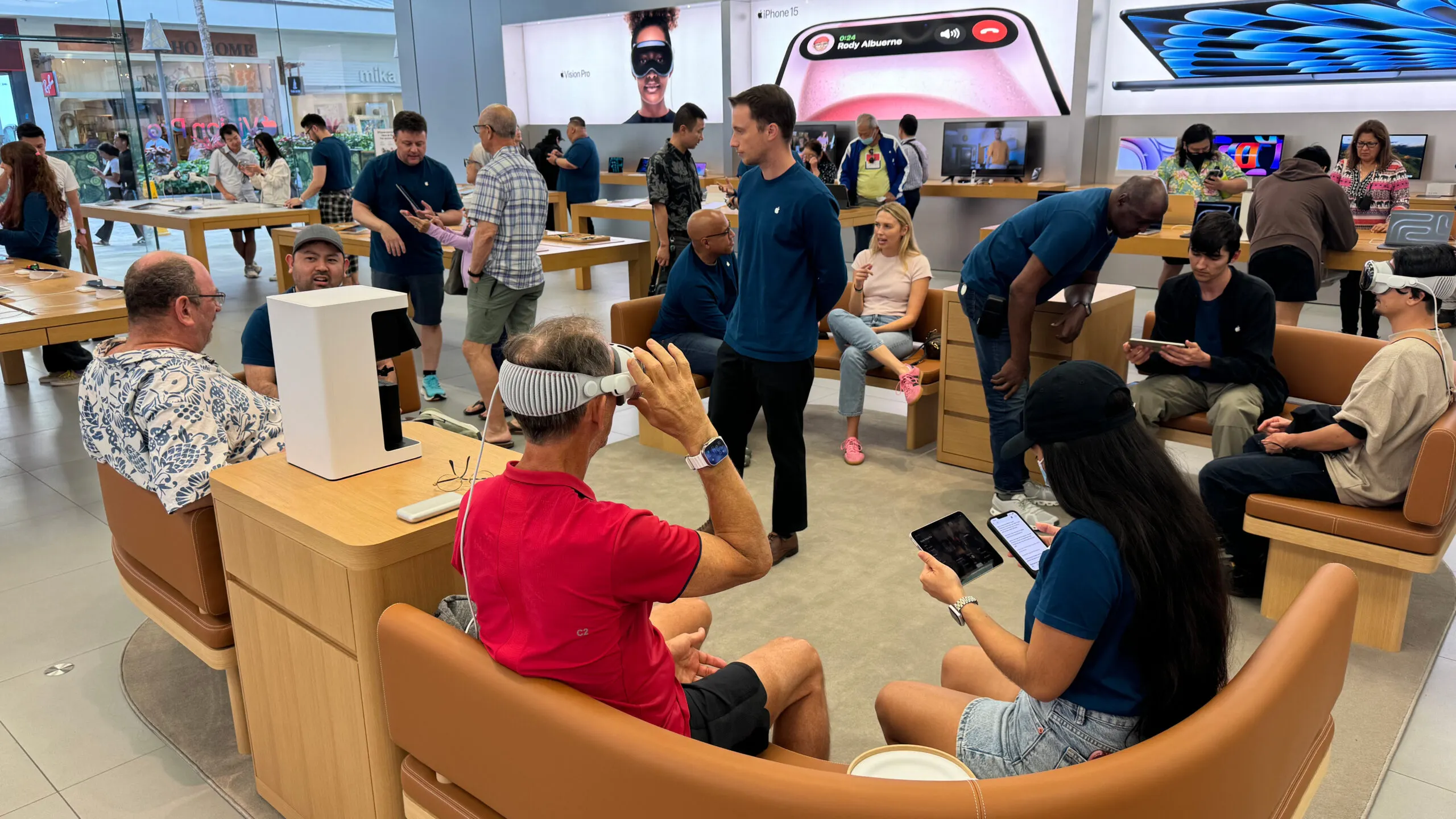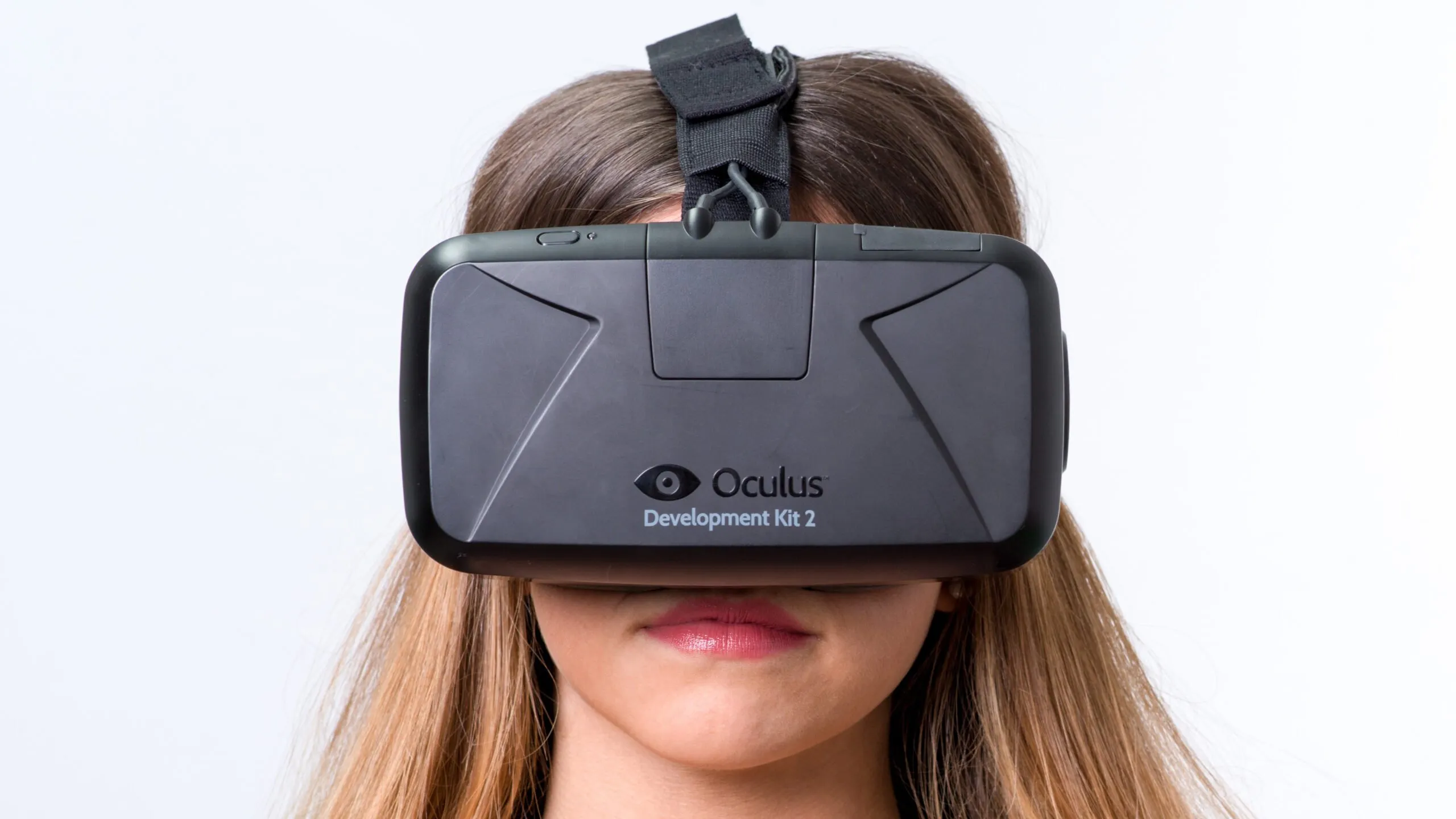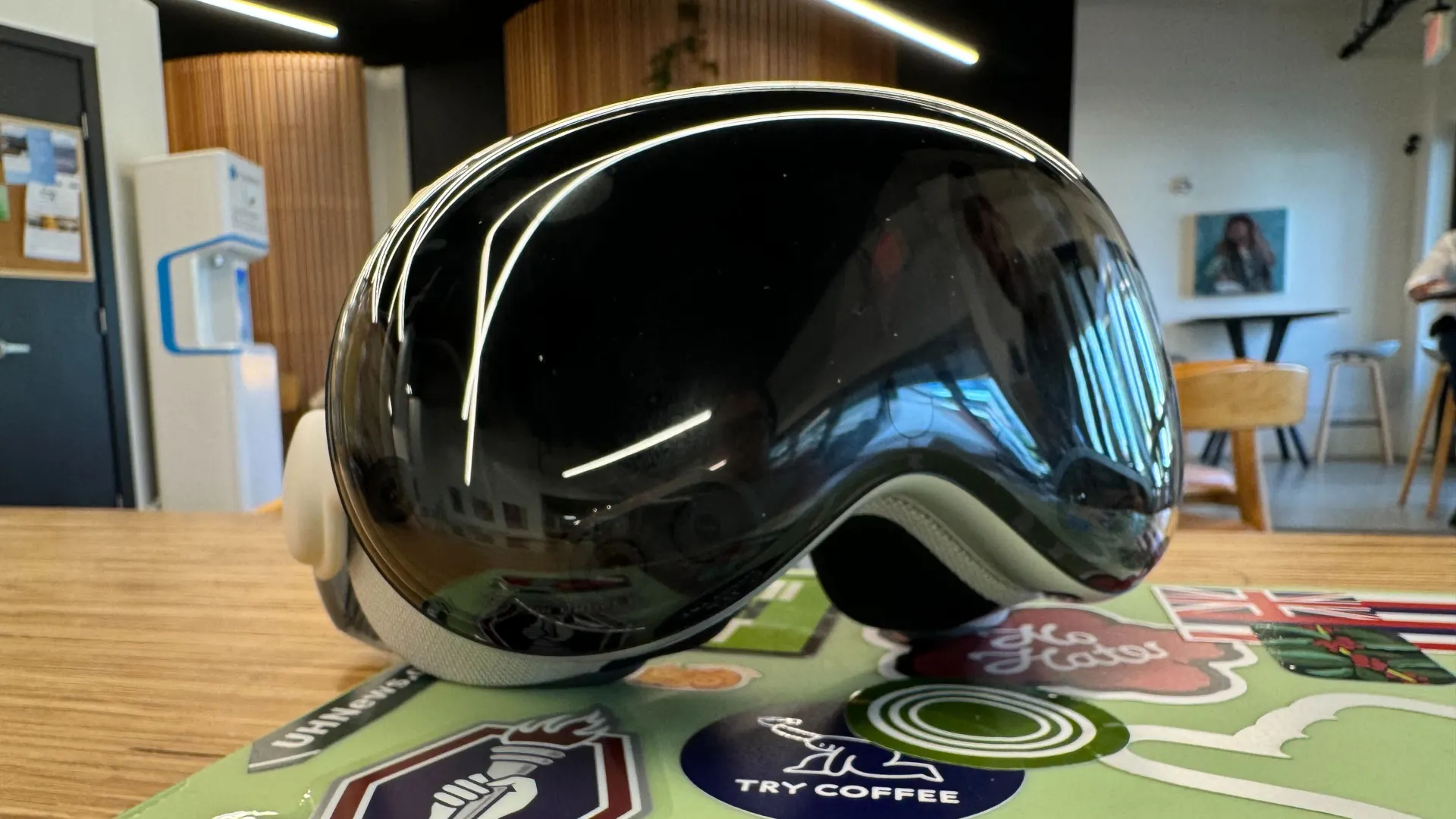For an overpriced, niche device, the amount of attention the Apple Vision Pro is getting is objectively remarkable.
As loudly as critics claim there are no real-world use cases for the VR headset that's not a VR headset, announced last June and delivered to customers beginning Friday, dozens of committed early adopters are coming up with new use cases every day.
Himels Tech gave one of the first overviews of what it's like trying to do computing work in an Apple Vision Pro, impressively leaving screens and apps floating around his house. (This guy worked in Apple Vision Pro for a full day.) Tech bro Brian Tong showed off the NBA app, a sports lover's dream.
Joanna Stern gave a killer cooking demonstration (then sat in on a TV interview with the device on her head). Veteran tech vlogger Justine "iJustine" Ezarik tried wearing hers in the pool. And super YouTuber Casey Neistat strapped one on and took off to roam the wild streets of New York City.
"It's the single greatest piece of tech I've ever used," he tweeted, adding that he also edited the video within the device.
true story; i edited this video on my Vision Pro on a 4k screen that was 11 feet tall and 20 feet wide floating in my living room. i could stand up and walk over to it. looking closely at the cuts and inspecting it like one of those huge wall maps from ww2 movies. https://t.co/AEb6Fn5pKS
— Casey Neistat (@Casey) February 4, 2024
Meanwhile, one Tesla Cybertruck owner did the inevitable, computing spatially while driving down the road. I'm not sure whether using the Apple Vision Pro in public will become as socially unacceptable as doing so with Google Glass—see also "glassholes" and even "Meta glassholes"—but stunts like this don't help.
All of my friends told me I would get one, and I tried to demur. To a muggle, it's ridiculous, almost ludicrous, given the price tag. But I can't pretend I'm not an obsessive early adopter who has picked up lots of new tech that didn't get the kind of attention the Apple Vision Pro is now getting: the first "tablet computers" (including the GridPad), the first PalmPilot (from the GridPad guys), the first Apple PowerBook and the Apple Newton (which I loved), and the first DJI drone.
Yet, some first-generation devices do change the world.
Despite the likely ribbing and head-shaking headed my way, then, this article is my coming out as another owner of Apple's first-generation "spatial computer."
Ultimately, I'm excited to see what truly useful or simply weird things people create in the weeks and months ahead. I may even get up the nerve to use it in public. For now, here are my takeaways from my first weekend with the Apple Vision Pro.
Getting onboard

Apple reconfigured its retail stores to set up demo areas for the Apple Vision Pro. While you could walk in, buy one, and walk out, they strongly recommend you take the guided tour with them first. I did, and it was helpful. It was also genuinely fun to be around other people having their first magical experience, oohing and gasping and laughing.
The retail setup even includes a brand new piece of hardware that allows Apple employees to take measurements of customers' eyeglasses and get an approximate prescription, allowing them to pop in corrective lenses that get prospective buyers closer to the visual acuity needed to use it.
Bella, my Apple guide, told me lots of customers were trying to record the guided tour, requiring some agility to stay out of frame per Apple's guidelines. And when I used Guest Mode for the first time to let my friend have his first Apple Vision Pro experience with my headset, I realized I wished I'd recorded the store demo, too. Sure, he was impressed, but only after a lot of fits and starts as I tried to explain the UI.
The at-home, out-of-the-box Apple Vision Pro experience pretty much drops you in cold. The "look at the dots and tap" setup calibration is the only introduction newbies have to getting around, and there's a lot more to it. Yes, Apple published a video playlist and documentation, and the 4,204 YouTube reviews and how-to videos cover most of it, Still, I'm surprised Apple doesn't use that critical opportunity to blow someone's mind out of the gate with even a playthrough (spatial) video.
I can still feel my face—and it feels tired

If you've never used a VR headset before, and an Apple Vision Pro is your first experience with a head-mounted display, then it probably does feel heavy. And since the battery pack is offloaded to a corded pack you keep in your pocket or clip to your clothes, the weight is front-loaded: you're holding this thing up with your cheekbones, and you can only offset that so much by tightening how hard it is pulled back against your head.
But its weight is comparable to the Meta Quest 3, it's lighter than the Meta Quest Pro—and compared to the monstrous first Oculus Rift, it's practically buoyant.
Two and a half hours of use, which the battery supports, passes pretty quickly. Go any longer (sustained by plugging in to power), and you might start to get neck fatigue, along with achy or dry eyes. But using the Dual-Loop Band—the simpler included alternative to the more photogenic Solo Knit Band—makes a big difference. The strap that goes over your head might muss your hair, but it capably helps support the weight of the Apple Vision Pro. With eye health breaks, you can easily go a whole workday.
A whole weekend is probably overstating my marathon experience—it looks like "who can go the longest without taking it off" will be the new endurance competition among geeks—but I did feel the effects after returning to the real world Sunday night.
I was slightly dizzy to be back seeing only reality, but compared to the full-on motion sickness I'd get from other VR headsets, it was mild. Physically, though, my giant head felt a little compressed (even using the Dual-Loop Band), and my neck and cheekbones were a little tender. I've never gotten a face massage at a spa, but I suddenly felt like I was in the market for one. Perhaps someone will make an Apple Vision Pro app that fires up the haptic engine to make it a "facial computer."
I'll still take a wearable over an implantable any day.
What struck me most about the form factor is that the Apple Vision Pro is just the bulbous glass lens and the recycled aluminum case that holds its guts. The rest is the light seal, cushion, and strap. It is very easy to see future generations of the Apple Vision Pro—perhaps the lower-priced Apple Vision of 2026—being thinner and lighter and held closer to the face.
You know, like Doc Brown in Back to the Future. Or (of course) "The Simpsons."
OMG The Simpsons predict the future again pic.twitter.com/DjokvAW1qh
— Nate Chan (@nathanwchan) February 4, 2024
It's augmented reality, mostly
Without a doubt, the Apple Vision Pro is the closest thing to an augmented reality headset we've seen. It's miles past the Quest 3 model, and its 180-degree field of view makes the once promising Magic Leap and its "expanded" 70-degree viewport look like an ancient artifact. Even so, the gap between its presentation of the world around you and the real world is pretty wide.
I expected the 180-degree screens to fill my human viewport, but there is still a hazy black border around everything. It's not as bad as looking through a pair of binoculars, but it's not like looking through glasses or a window, either. And since the "real world" you see is being re-broadcast from cameras, the usual problems are still in play: motion blur, hard-to-read text, and low-light struggles. The Apple Vision Pro can get pretty bright, but the real world still makes you squint and blink when you take it off.

It's good enough that people are walking around with them, for better or worse, and I don't think you could do that with any predecessor. But I like to think it's this "pass through" that will see the biggest improvements in version two.
Apart from that, though, the experience is indeed magical. Grabbing app, browser, and Mac windows and moving them around became second nature very quickly. I was immediately struck by how firmly elements sit floating in space—it's eerie the first time you experience it. I frequently found myself walking 'through" my windows, then turning around and returning to them, just like in a sci-fi movie.
Spatial audio is amazing, moving around with the elements that are making noise, actually making me turn my head when a sound is made anywhere around me. (I'm not sure how audible it is to people around me, though, nor am I sure I could hear sound on a noisy airplane.) And the ability to dial-in and dial-out of reality—and especially the way it shows you people approaching you in real life with a ghostly face peeking into your space—is wild.

A lot of people are pointing out that the Apple Vision Pro is very personal, very private, and thus, very isolating. Apart from taking FaceTime or Zoom calls inside the device, it's not like you can be in a virtual space with friends. It's the best big-screen home theater screen you'll have, but you have to watch it alone.
I suspect I'm more of a loner than people think, and thus, I'm completely fine with this. In fact, the privacy aspects are attractive. With my Mac screen inside the Apple Vision Pro, nobody is going to be watching or reading what I'm working on.
By the way, as a glasses wearer with a strong, wonky prescription, I was impressed that the custom Zeiss lenses could accommodate my eyesight. (Even some online glasses shops say my prescription is too extreme.) The eye tracking is so precise, I can't use the Apple Vision Pro without the corrective lenses—even if I squint. It can seemingly tell that I can't really see where I'm looking, and doesn't cooperate as a result.
Mixed modes are confusing
If you're in the Apple ecosystem and own both an iPad and a MacBook, then you understand how your brain easily forgets whether you're using a touch-based interface or a mouse or trackpad. I use my iPad as a second screen, and I'm always touching my MacBook screen to close or move a window, to sad effect.
Using the Apple Vision Pro is even more confusing when using what is, for me, the most important feature of the headset: Mac Virtual Display. The headset can become a "private, portable 4K display for your Mac," and I've found it's every bit as impressive as reviews have said.
Except now I need to switch between the virtual keyboard and my real keyboard, and between the trackpad and my naked fingers. All weekend I've tried to look at a MacOS button trying to highlight and click it, or typing on either keyboard and not knowing where the text was coming out. I was glad to be computing alone, so I could be futilely pinching and dragging my fingers in the air without witnesses.
These are all floating screens in front of me, and they're great. But they don't work the same way.
I'm not a UI designer, but I don't understand why the standard location of the "close window" button and "drag to move" bar in VisionOS is underneath each window, when such things are almost universally on top of windows elsewhere.
The potential is exciting
As frustrating as it is to read, it's impossible to use the Apple Vision Pro and not get excited about what the next version will bring. As top tech vlogger Marques Brownlee opined, the Apple Vision Pro is imperfect and flawed, and that's what makes it interesting. It's so very much a first-generation device, and like the iPad and Apple Watch, I don't think even Apple knows where users will take things.
On one hand, it's so well made, it's obvious Apple was working on this for years. It's like they were training us for this day. The hardware and software is very Apple—for better or worse—and that the Apple Vision Pro feels like a combination of an iPad and an Apple Watch strapped to your face is no accident.
On the other hand, so many trade-offs were made to get this thing out today, rather than three years from now. My editor at Decrypt rightfully mused, "What would Steve Jobs think?"
The corded battery and two-hour battery life seems like a throwback to a decade ago. The fact that the pass-through is often muddy is disappointing, and the utility of the outward-facing "eyeballs or moiré patterns" screen is unclear. (I'm certainly all for wearables telling others when you're watching or recording them, though.)
But two things are true: the Apple Vision Pro is without a doubt the most advanced and promising new paradigm in personal computing we've seen in years. And it is also its early, awkward, imperfect days.
If it were just replacing a giant projection screen that would never fit in my 400-square-foot Waikīkī apartment, it would almost be worth it. It's everything else—and everything that's coming—that has me feeling good about taking the leap.
Edited by Andrew Hayward

